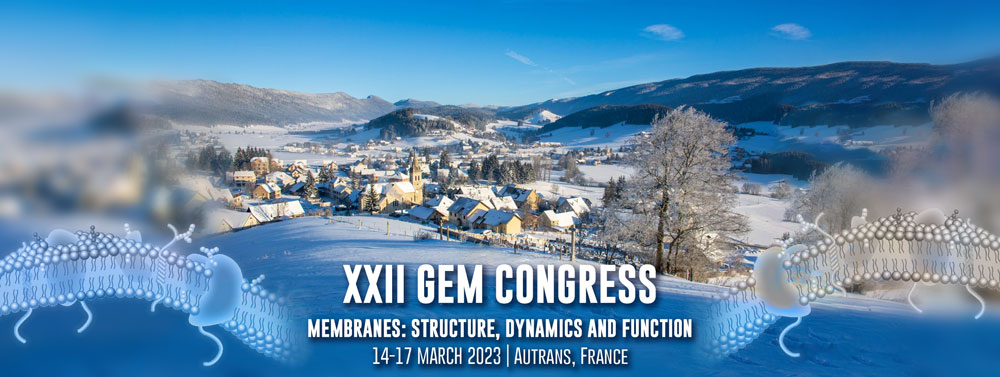Speaker
Description
Poxviruses are large enveloped dsDNA viruses that infect a wide range of eukaryotes and can spread in human populations. Vaccinia virus (VACV) is the type species of the Poxviridae family and serves as a well-established laboratory model to study virus-host interactions. Notably, the complex infectious particles of VACV are enveloped and brick-shaped. On the inside, there are two lateral bodies and the viral core, which encases the viral genome within a proteinaceous core wall. These infectious particles are produced after a complex maturation process of spherical immature particles that involves protein phosphorylation and proteolytic cleavage. The immature particle, in turn, is formed from typical open-ended membrane precursors termed VACV crescents. The mechanism of viral membrane assembly is hence unique for poxviruses and different from budding or envelopment observed for other enveloped viruses. However, fundamental questions remain open in the field, particularly regarding the formation of membrane precursors, the growth of crescents and the maintenance of open membrane ends in the host cytoplasm. In my group, we aim at gaining a better mechanistic understanding of VACV membrane assembly using cellular cryo electron tomography (cryoET) and correlative approaches. We therefore developed an optimized workflow to target the viral assembly sites directly within infected cells with a fluorescently labelled virus (from Michael Way). These sites can hence be identified and then targeted with focused ion beam (FIB)-milling under cryo conditions to produce thin sections for cellular cryoET that contain crescents and other assembly intermediates. With such advanced workflow, we could observe viral assembly intermediates at various stages in the native cellular context and gain access to the structure of viral components with unprecedented details. Altogether, our new findings already provide significant insights into the unique mechanism of VACV membrane assembly and its coordination with viral genome packaging in particular.
| Session | Host-pathogen interactions |
|---|

